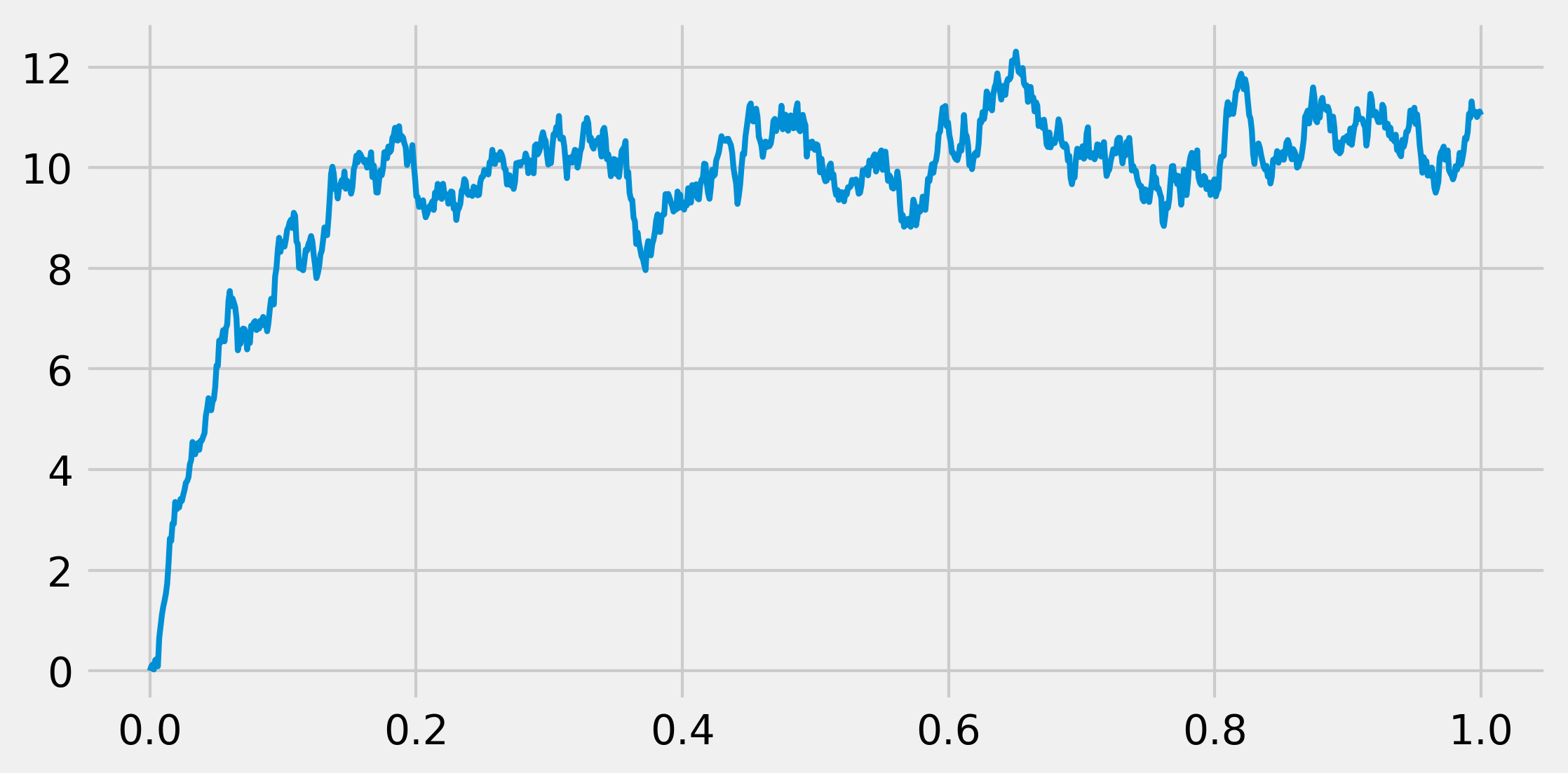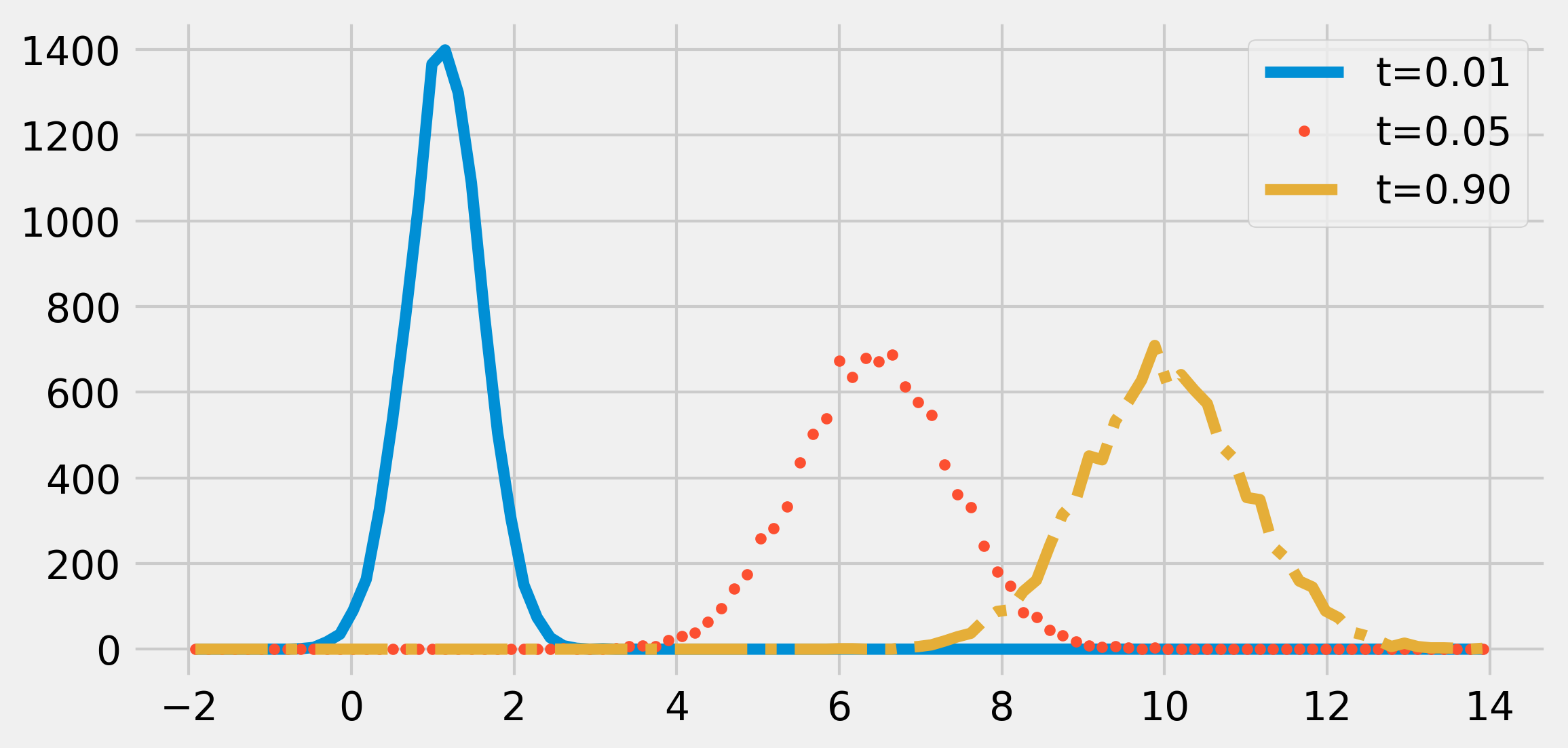Jupyter Snippet CB2nd 04_sde
Jupyter Snippet CB2nd 04_sde
13.4. Simulating a stochastic differential equation
import numpy as np
import matplotlib.pyplot as plt
%matplotlib inline
sigma = 1. # Standard deviation.
mu = 10. # Mean.
tau = .05 # Time constant.
dt = .001 # Time step.
T = 1. # Total time.
n = int(T / dt) # Number of time steps.
t = np.linspace(0., T, n) # Vector of times.
sigma_bis = sigma * np.sqrt(2. / tau)
sqrtdt = np.sqrt(dt)
x = np.zeros(n)
for i in range(n - 1):
x[i + 1] = x[i] + dt * (-(x[i] - mu) / tau) + \
sigma_bis * sqrtdt * np.random.randn()
fig, ax = plt.subplots(1, 1, figsize=(8, 4))
ax.plot(t, x, lw=2)

ntrials = 10000
X = np.zeros(ntrials)
# We create bins for the histograms.
bins = np.linspace(-2., 14., 100)
fig, ax = plt.subplots(1, 1, figsize=(8, 4))
for i in range(n):
# We update the process independently for
# all trials
X += dt * (-(X - mu) / tau) + \
sigma_bis * sqrtdt * np.random.randn(ntrials)
# We display the histogram for a few points in
# time
if i in (5, 50, 900):
hist, _ = np.histogram(X, bins=bins)
ax.plot((bins[1:] + bins[:-1]) / 2, hist,
{5: '-', 50: '.', 900: '-.', }[i],
label=f"t={i * dt:.2f}")
ax.legend()
